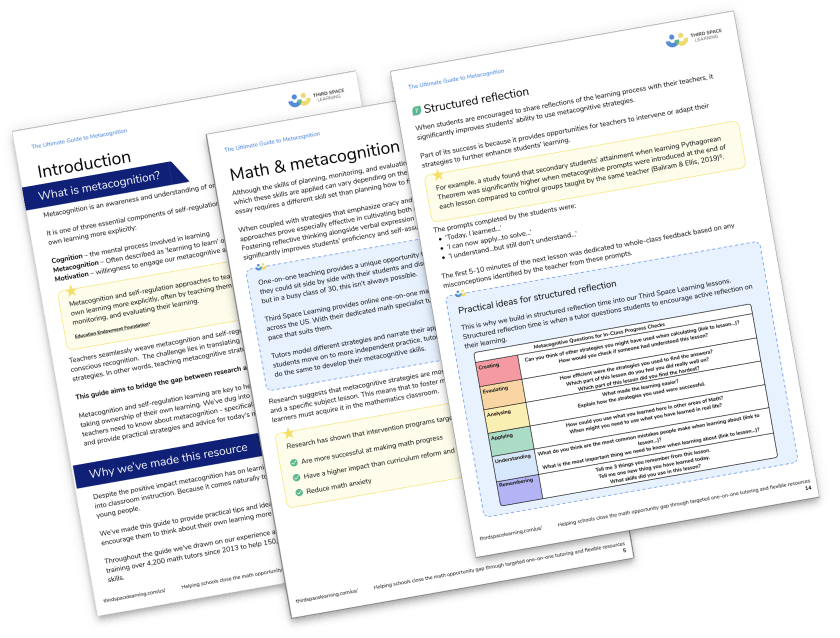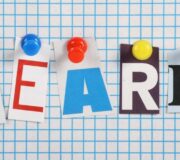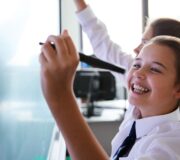Why Student Centered Learning Is Important: A Guide For Educators
A student centered classroom looks and feels different than a traditional, teacher-centered classroom. There aren’t rows of desks or students listening to a lecture. Instead, students work on questions or projects that interest them. The teacher guides or resources lessons to facilitate learning.
This article explores why schools should adopt student centered instruction and learning approach and how to implement it in the classroom.
What is student centered learning?
Student centered learning is an approach to teaching and learning that focuses on student choice when planning and implementing lessons. Despite common misconceptions, it is not the same as differentiated instruction.
Rather than teachers selecting and implementing a curriculum, students choose what they want to learn about and set their goals and a path for achieving this.
The idea is that, if students guide and influence the learning environment, they find learning more meaningful, are more motivated and actively engage in lessons.
27 tips for teacher observation
Use these 27 tips to ensure you're demonstrating student centered learning in your next teacher observation.
Download Free Now!Key principles of student centered learning
In student centered learning, individual students are seen as unique learners with distinct preferences, interests, learning styles and abilities.
Educators can incorporate student centered teaching into a project or a teacher’s pedagogy. Either way it adheres to the key principles:
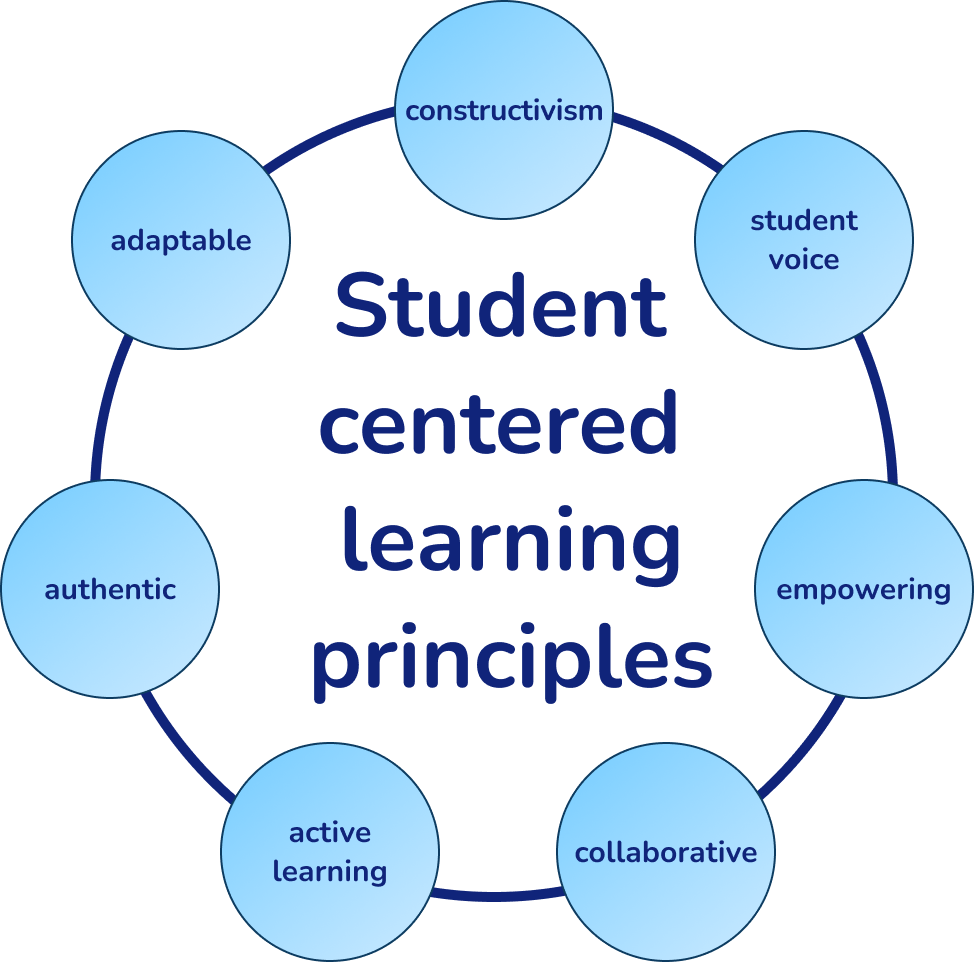
Constructivism
Student centered learning is a constructivist theory, meaning that students can build and construct their own learning. Rather than seeing the teacher as pinnacles of knowledge, students come to class with knowledge, skills and motivation that shape how and what they learn.
Student Voice
In a student centered approach, students have the first say in what they learn and how. Teachers can choose how they engage student voice to discover what students want to learn and how.
An elementary teacher may discuss topics they are interested in during carpet time, while a high school teacher may start with an interest survey before starting a project.
Regardless of how teachers gather student voice, it plays an important role in how teachers plan instruction.
Empowering
Teachers empower students to be self-directed at every point of the learning process. Students should know what they are learning and how.
As students set their goals, track their progress, and reflect on their learning, they gain a sense of competency and empowerment.
Collaborative
Part of the goal of student centered learning is to develop students’ communication skills as they work in groups, present their learning, and advocate for their ideas.
Students can work collaboratively in small or large groups to complete student centered projects, problems, and activities.
Active Learning
As students engage in activities and monitor their progress towards a goal, and work on meaningful projects, they are actively engaged in all aspects of learning.
As students move through the learning process, they actively engage in learning new information, practice new skills, and reflect on what they learned.
Authentic
Students engage when applying skills to address topics or problems that are relevant and authentic to them.
For example, a class may feel passionate about increasing recycling in their school. They learn about recycling and brainstorm a solution for their school. As part of the curriculum, they learn:
- About the recycling process
- How to calculate the amount of recycling throughout their project
- Which stakeholders in their community also care about this problem
At the end, they reflect on how their efforts changed recycling habits in their school, and calculate how much recycling material was saved from ending up in landfills. They can also reflect on the skills they used and what they learned.
Flexible and Adaptable
Compared to a traditional classroom, teachers need to be flexible and adjust the teaching and learning as students’ questions and curiosity drives a project in a new direction.
Teachers should monitor what students are learning and demonstrating so they can support students in advancing to the next set of skills.
| Traditional approach | Student centered approach |
| • Students receive information from the teacher • The teacher decides on the topics and activities • The teacher decides how students learn and how students demonstrate understanding • Assessment is teacher-directed. Collaboration is teacher-directed • Students work towards a specific outcome • Teachers decide how students spend their time | • Students are active participants in learning • Students make decisions about what and how they will learn • Students reflect on learning and engage in self-assessment • Students organically engage with peers • The teacher is a guide or facilitator for learning • Teachers provide resources and feedback • Students manage their time |
Benefits of student centered learning
student centered learning has many benefits for students, including building:
- academic skills
- critical thinking
- problem solving
- communication skills
A report from Stanford University found that when students learn in a student centered environment, they:
- Learn academic skills that they can transfer from one activity and setting to another
- Feel connected to school
- Have a sense of purpose
- Are more likely to graduate and attend college at rates higher than district and state averages

Meet Skye, the voice-based AI tutor making math success possible for every student.
Built by teachers and math experts, Skye uses the same pedagogy, curriculum and lesson structure as our traditional tutoring.
But, with more flexibility and a low cost, schools can scale online math tutoring to support every student who needs it.
Find out moreInstructional strategies for student centered learning
As a teaching strategy, student centered learning can take many forms depending on the school, classroom and student. However, all of these approaches first consider student voice and let their choice drive the learning. This is underpinned by teachers guiding rather than directing student learning.
Project-based learning
In project-based learning (also known as problem based learning, inquiry-based learning, or PBL), students investigate and solve an authentic, engaging problem or challenge and learn knowledge and skills through the process.
Instruction focuses on teaching students how to identify and explore a problem, and learn the skills that are relevant to solving that problem.
For example, a class may identify the problem of air pollution in their city. They define the problem and learn about it, then propose a solution and work to see their idea through. At the end of their task, they reflect on the skills learned as well as the changes made in their community.
Collaborative learning
Collaborative learning involves working in pairs or small groups to solve problems. Working together helps students clarify misunderstandings and support learning as students teach each other.
In student centered classrooms, students can work in collaborative groups they select and manage as they work towards a common goal.
For example, a small group of students may decide they want to learn more about fractions. They work together to create a bank of resources about fractions. The teacher provides them with application problems to work through and they work collaboratively to solve each problem. When they feel they have met their goals, they present their new knowledge to the class and complete a self-assessment about their fraction knowledge.
Discovery learning
Discovery learning is another constructivist approach to learning that encourages students to explore topics that interest them or questions they are curious about.
It is aligned with student centered learning as students identify and pursue their own interests to build knowledge and skills.
For example, a group of students is interested in architecture. They explore architecture as a field and design their dream houses. As part of the project, they learn new vocabulary and learn and apply math concepts for area and perimeter. At the end, they have a blueprint of their dream house to share.
Role of the teacher
Teachers in student centered classrooms have a unique role. A study in the International Journal of STEM Education found that shifting to student centered learning required teachers to shift from being the source of information to a guide or facilitator, mentor, or resource.
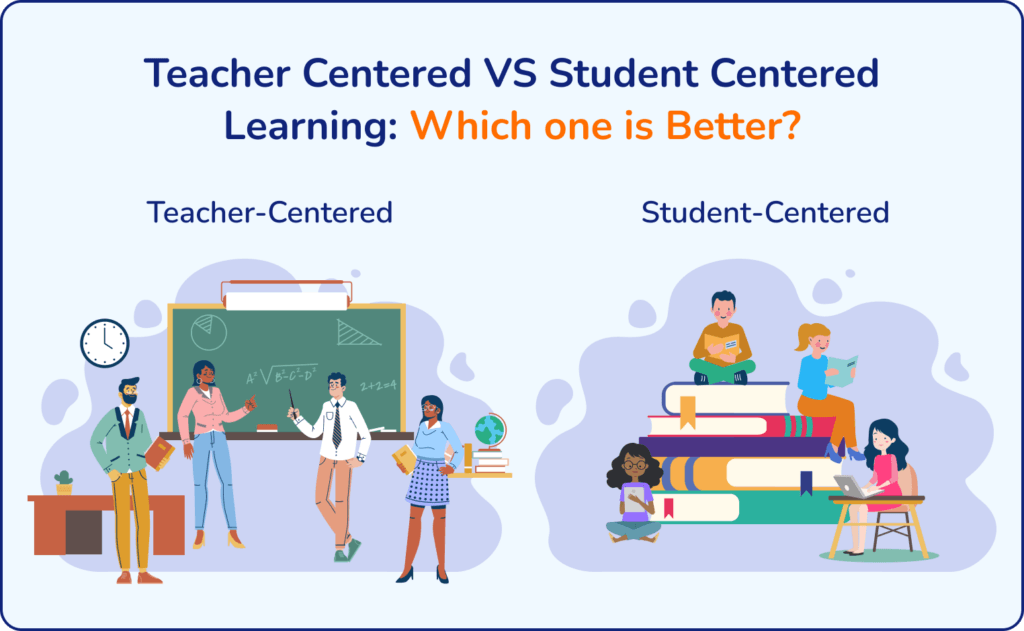
Guide
When a teacher steps into the role of a guide, they facilitate and support students’ interest rather than telling students what they should know and do.
That’s not to say that the teacher stops giving students information, instead, the teacher must understand how each student learns, the projects or questions they are working on and how to support each student so they master content and gain skills.
Mentor
Relationships are at the foundation of student centered learning, and students rely on strong, trusting relationships with teachers to build confidence in learning.
When the teacher is a mentor, they model how to learn and engage with students, how to provide feedback and offer expertise as students develop new skills.
Resource
As a resource, teachers work alongside students in learning activities and connect students with additional academic and community resources.
For example, a teacher may connect a student who is interested in robotics to a resource at a local college or business.
In any of their roles, teachers must also help students see how their day-to-day work is connected to long-term learning, and how they progress through grade-level skills.
Overall, teaching in a student centered classroom requires teachers to:
- Encourage students’ learning
- Identify and gauge each student’s level
- Provide timely and effective feedback
- Assess student progress and adjust instruction accordingly
- Show students what and how they learn and progress
- Help students set and track personal goals
- Support students when they experience failure and mistakes
- Help students develop reflection and critical-thinking skills
- Teach and provide opportunities for students to be self-advocates during the learning process
- Teach students how to learn independently and access information relevant to their interests
How to create a student centered learning environment
Transitioning to student centered learning requires a shift for teachers and students, and both will have to learn new skills and ways of working. Here are three things that teachers can do to start moving to a student centered classroom.
Help learners set their own goals
Goal-setting, progress monitoring, and reflecting on learning are the foundation of making sure that each student is learning.
- Teach students how to set goals and monitor their progress towards a goal.
- Provide support and feedback about how the student is working and learning.
- Point out and reward student work habits. Point out when students are working independently, tackling problems on their own, seeking out resources, and persevering through a tough spot.
- Engage in regular self-reflection about how students are learning and how they can stretch themselves.
Cultivate student voice
Students must learn about themselves as learners to be successful in a student centered classroom.
- Observe and record observations about each student. Then, use those observations to help students learn how they learn best.
- Share decision-making with students. Set a time each day to identify decisions that have to be made.
- Have a list of questions that support the teacher guide role, questions that give student back decision making, like “What do you think?” or “How could you approach this problem?”
- Curate resources that support student work and direct students to the materials that best support their project or problem.
- Rearrange the classroom to promote collaboration by putting desks into groups, or providing more flexible working spaces around the room.
Use technology to support student learning
Interactive technology can make teachers’ jobs as facilitators easier as they provide immediate feedback and monitor student work using various tools.
- Choose one or two sites or methods to use to monitor and record student progress.
- Teach students the skills they need to advocate for themselves and reflect on learning using technology.
Online one-on-one tutoring sessions with Third Space Learning provide reports on each student so educators can progress monitor students’ achievement.
AI tutor, Skye, prompts students with questions to encourage their independent thinking, problem solving, critical thinking and find solutions.
Sessions focus on the concepts and topics students need to practice most to help them achieve grade-level proficiency in math.
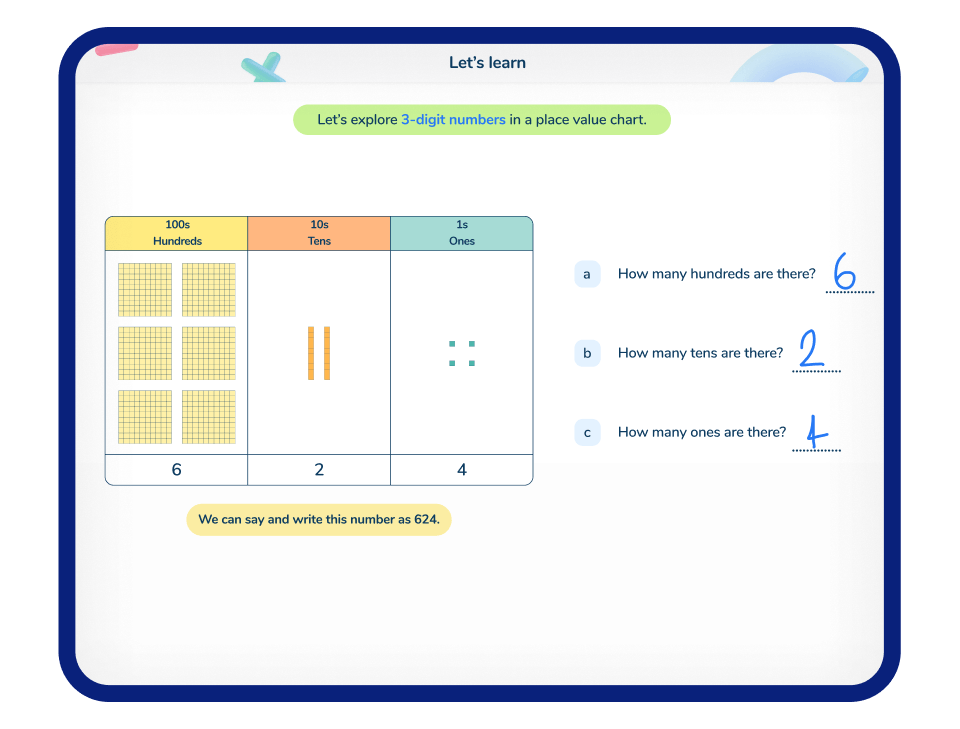
Challenges of student centered learning
Shifting to student centered learning requires significant shifts in how teachers and students see their role in the classroom and in everything from room design to communication. Of course, challenges will arise. Here’s how to tackle them.
Resistance
Some students and teachers are more comfortable with a teacher centered approach and may resist student centered learning strategies.
How to address this challenge
- Start small, dedicate one section of the day to student centered learning. As teachers and students become more comfortable with the practices and see the benefits, expand the time that is dedicated to student centered learning to a full block or even most of the day.
- Students may resist the change as well. Prepare to allow additional transition time and supports for students who are not ready for a change.
Lack of resources and training
As with any education initiative, teachers need to be fully trained and may need additional resources such as flexible seating to start a new initiative.
How to address this challenge
- Provide a gradual roll-out and offer training and coaching in the process.
- Support teachers through resources and teacher coaching to help them adjust classroom routines and strategies.
Read more about approaches to effective tutor training.
Addressing diverse student needs
Each classroom has students working below grade level and require Response to Intervention. Or those who require accommodations or modifications due to learning or physical disabilities.
student centered learning is a whole-classroom approach. It is provided through Tier 1 instruction that all students receive.
Students with diverse student needs may require Tier 2 or Tier 3 interventions. Student centered learning can accommodate for Tier 2 and 3 interventions when teachers work together to provide Response to Intervention or a multi-tiered system of supports (MTSS interventions), but this may prove challenging at first.
How to address this challenge
- Communicate with intervention teachers and special education teachers and ask for their advice on how to incorporate interventions and supports.
- Remember that student centered learning is meant to address each student individually. Each student will require different supports, provide additional direction or support for each student aligned with student centered learning.
Difficulty adjusting to a student centered environment
Student centered classrooms are generally louder. As the educator, it may feel chaotic with students working in different spaces on different things.
How to address this challenge
- Set the expectation that classrooms should be noisy and have a buzz when students are learning, but talk should be work focused.
- Teach students routines to manage a shared workspace, like a cue to pause and look at the teacher, or a noise management system.
Ensure all students gain the same level of knowledge
Not all students have the same level of knowledge or skills after completing a course. Nor are they all ready for a standardized assessment.
How to address this challenge:
- Progress monitoring student growth helps identify students who are falling behind and allows educators to step in to provide additional support when students do not make the required levels of growth.
The importance of student centered learning
student centered learning helps structure the classroom, learning activities, and learning experiences to meet each student where they are.
Students learn how to use their voice and what they need as learners, while teachers empower them through collaboration and facilitation.
Applying student centered learning for a portion of the traditional school day is a valuable way to increase student engagement and address learning standards in a beneficial way.
READ MORE: 26 Whole Class Math Games
FAQs
Teaching in a student centered classroom requires a shift in the teacher’s role from a leader or lecturer to a guide, mentor, and resource. Teachers help students identify their interests, pursue them, and provide feedback and support for students to develop problem-solving and critical thinking skills along the way.
student centered learning is a constructivist approach to learning that supports student learning through authentic exploration of questions and problems based on student interest. Students work through content and projects at their own pace, setting goals and monitoring their progress.
Students and teachers work together to set a goal and path to achieve the goal. Each student is working on their path to achieve the goal and the teacher provides mentorship and guidance through resources and feedback as student work.
